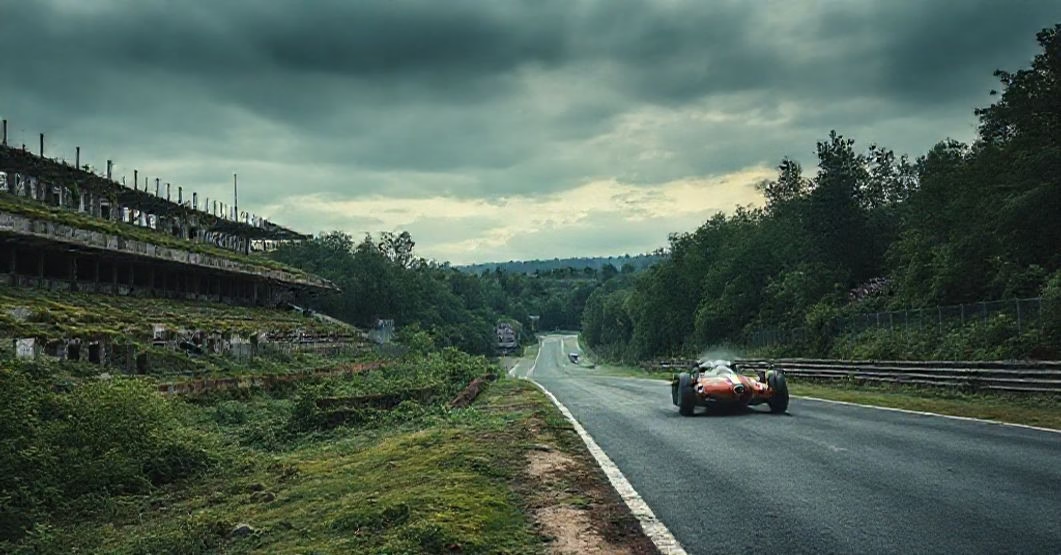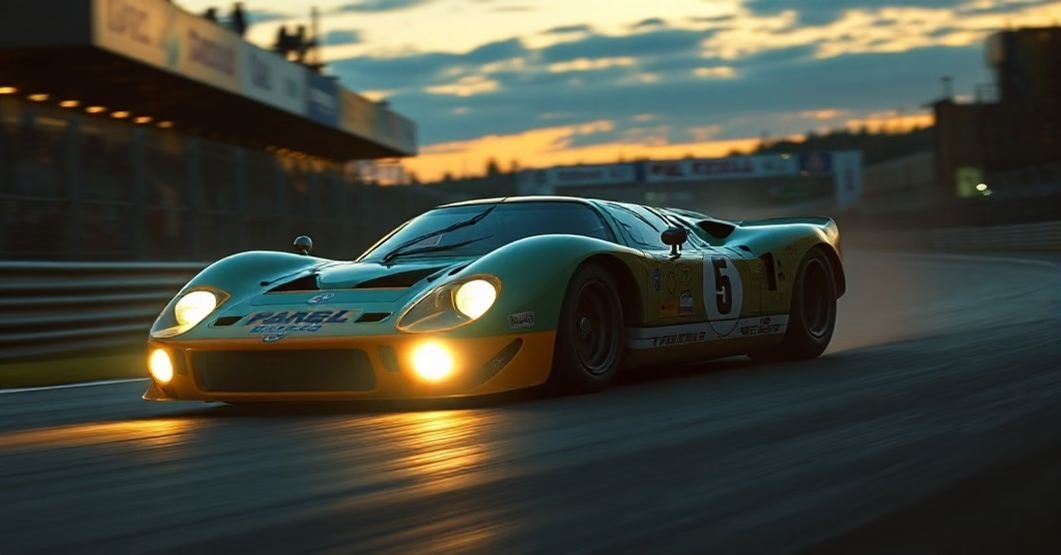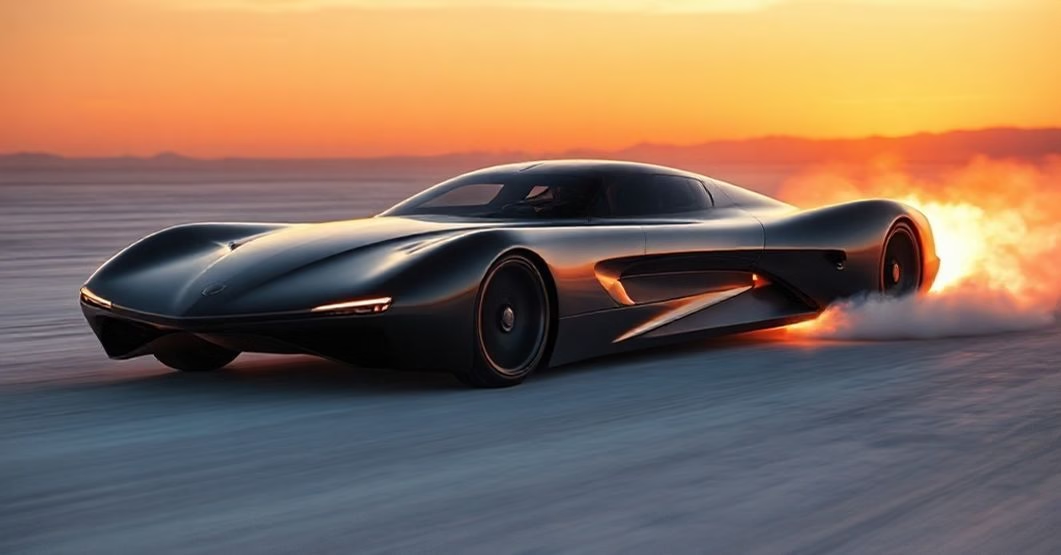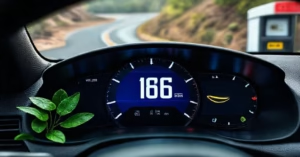Legendary Drag Racing Cars: 10 Speed Demons of History
Legendary Drag Racing Cars: 10 Iconic Speed Demons
Step into the thrilling world where raw power meets blistering speed. Drag racing isn’t just a sport; it’s a spectacle of engineering marvels and human courage, where quarter-mile dashes etch names into the annals of history. For decades, drivers and their machines have pushed the boundaries of what’s possible, captivating audiences and setting seemingly insurmountable records. These aren’t just cars; they are **legendary drag racing cars**, each with a story of innovation, triumph, and sheer, unadulterated velocity.
From the early days of hot rods to the nitro-burning monsters of today, the evolution of the dragster has been a relentless pursuit of speed. This article delves deep into the rich tapestry of drag racing history, unveiling ten of the most iconic and influential speed demons that have graced the strip. We’ll explore their unique designs, the fearless drivers who piloted them, and the indelible mark they left on the sport. Prepare to journey through time and witness the powerhouses that became true **drag racing legends**, inspiring generations and forever changing the face of motorsports. Whether you’re a seasoned fan or new to the spectacle, you’ll discover why these machines earned their mythical status.
The Evolution of Speed: From Hot Rods to Top Fuel Titans
Drag racing emerged from the post-WWII hot rod culture, with enthusiasts tweaking engines and stripping down cars to see who could go fastest over a measured distance. What started on dusty roads and repurposed airfields quickly grew into an organized sport. The initial focus was on raw horsepower, often achieved through engine swaps and rudimentary aerodynamics. As the sport gained traction in the 1950s and 60s, purpose-built machines began to appear, leading to specialized classes like Top Fuel, Funny Car, and Pro Stock. This era saw the relentless pursuit of shorter elapsed times and higher trap speeds, driven by technological innovation and intense rivalries.
The progression was rapid. Early dragsters were essentially stretched-out hot rods with powerful V8 engines. But soon, breakthroughs like purpose-built chassis, slick tires, and, most crucially, the adoption of nitromethane fuel transformed the sport. Nitromethane, offering significantly more power than gasoline, turned these machines into fire-breathing monsters, setting the stage for the **fastest drag cars ever**. This constant push for performance birthed the iconic machines and the fearless drivers who became household names. Each legendary car represents a pivotal moment in this evolution, showcasing advancements in engine design, chassis technology, and driver skill that defined their respective eras.
The Icons: Top 10 Legendary Drag Racing Cars
1. Don Garlits’ “Swamp Rat XIV” (Top Fuel)
No discussion of **legendary drag racing cars** is complete without “Big Daddy” Don Garlits and his revolutionary “Swamp Rat” series. While many of his cars were groundbreaking, the **Swamp Rat XIV** stands out as a pivotal machine. In 1971, following a horrific clutch explosion accident in his front-engine dragster, Garlits courageously pioneered the rear-engine Top Fuel dragster design. This innovation radically changed drag racing safety and performance. By placing the engine behind the driver, Garlits not only moved the explosion risk away from the driver but also significantly improved traction and weight distribution, making the cars faster and more stable. His design was initially met with skepticism, but Garlits proved its superiority by winning the 1971 NHRA Winternationals and the U.S. Nationals with Swamp Rat XIV. This move single-handedly rendered front-engine dragsters obsolete in Top Fuel, marking a monumental shift in **dragster design history**. Garlits continued to evolve his designs, with subsequent Swamp Rats pushing the boundaries further, securing multiple championships and solidifying his status as perhaps the greatest innovator in the sport.
2. Don Prudhomme’s “Snake” Plymouth Barracuda (Funny Car)
Don “The Snake” Prudhomme, and his iconic rivalry with Tom “The Mongoose” McEwen, brought drag racing into mainstream culture. While Prudhomme raced many memorable machines, his **”Snake” Plymouth Barracuda Funny Car** from the 1970s is particularly legendary. Beyond its striking yellow and red livery, this car was a consistent winner, known for its blistering elapsed times and trap speeds. Prudhomme’s meticulous approach to racing, combined with the power of his Keith Black-powered Hemi engines, made the Barracuda a formidable opponent on any strip. The “Snake vs. Mongoose” Hot Wheels marketing campaign, a trailblazer in sports sponsorship, immortalized these cars and their drivers, making them instantly recognizable even outside of drag racing circles. This car truly embodies the spirit of the **funny car era**, blending aggressive performance with a captivating showmanship that defined the category for a generation. The Barracuda became synonymous with Prudhomme’s dominance and his sleek, professional demeanor.
3. Shirley Muldowney’s Pink Lady Top Fuel Dragster (Top Fuel)
Shirley Muldowney wasn’t just a driver; she was a trailblazer who shattered glass ceilings in a male-dominated sport. Her **Pink Lady Top Fuel Dragsters** became symbols of her fierce independence and relentless pursuit of victory. Despite facing immense sexism and resistance, Muldowney persevered, becoming the first woman to win an NHRA Top Fuel national event, and later, the first woman to win three NHRA Top Fuel world championships (1977, 1980, 1982). Her cars, initially painted a vibrant pink, were potent machines powered by powerful nitro-methane engines. Muldowney’s direct, no-nonsense approach to racing, coupled with her incredible driving talent, proved that skill and courage knew no gender. Her achievements opened doors for countless female competitors in motorsports and cemented her place as one of the most influential **drag racing legends** of all time. The Pink Lady wasn’t just a car; it was a statement.
4. John Force’s Castrol GTX Funny Car (Funny Car)
John Force is synonymous with modern Funny Car racing, and his numerous **Castrol GTX Funny Cars** represent an unparalleled era of dominance. With 16 NHRA Funny Car world championships and over 150 national event wins, Force holds virtually every major record in the class. His various Chevrolet Camaros, Pontiac Firebirds, and Ford Mustangs, all adorned with the iconic Castrol GTX livery, have been at the forefront of Funny Car innovation and performance for decades. Force’s aggressive driving style, combined with his team’s relentless pursuit of horsepower and chassis tuning, made his cars almost unbeatable in their prime. Beyond the technical prowess, Force’s charismatic, larger-than-life personality and famous post-run interviews endeared him to millions of fans, making him an enduring icon. His vehicles exemplify the evolution of the modern Funny Car, showcasing how teams leverage advanced technology and immense resources to achieve consistent, record-breaking performance on the strip, solidifying his status among **iconic dragsters**.
5. Kenny Bernstein’s Budweiser King Top Fuel Dragster (Top Fuel)
Kenny Bernstein, known as “The King of Speed,” made history with his **Budweiser King Top Fuel Dragster** by becoming the first driver to break the 300 mph barrier in a quarter-mile run. This monumental achievement occurred on March 20, 1992, at the NHRA Gatornationals in Gainesville, Florida, forever changing the perception of Top Fuel drag racing. The “Budweiser King” was a testament to meticulous engineering, relentless testing, and Bernstein’s unwavering commitment to pushing limits. His team, led by legendary crew chief Dale Armstrong, pioneered many innovations in chassis design and engine management that contributed to this breakthrough. The 300 mph milestone was a watershed moment, sparking a new era of speed records and emphasizing the incredible power of these **nitro methane engines**. Bernstein’s record not only etched his name in history but also set a new benchmark for all Top Fuel competitors, driving further advancements in the quest for ultimate velocity.
6. Bill Jenkins’ “Grumpy’s Toy” Chevrolet Nova (Pro Stock)
Bill “Grumpy” Jenkins was more than a driver; he was an engineering genius and a fierce competitor who revolutionized Pro Stock racing. His various **”Grumpy’s Toy” Chevrolet Novas** from the late 1960s and early 1970s were legendary for their precise tuning, innovative components, and consistent performance. Jenkins was a pioneer in many aspects of engine building and chassis setup, often outsmarting his competitors with his meticulous attention to detail and scientific approach. He was among the first to popularize the use of dry-sump oiling systems, camshaft designs, and specialized carburetors that became standard in Pro Stock. “Grumpy’s Toy” wasn’t just fast; it was a rolling laboratory of ideas that elevated the technical sophistication of drag racing. His methodical approach and numerous victories, including the 1972 NHRA WinterNationals where he debuted the small-block Vega, cemented his legacy as a true **pro stock pioneer** and a strategic mastermind.
7. Ohio George Montgomery’s “Malco Gasser” (Gasser/Early Pro)
Before the full specialization of Pro Stock, the Gasser class was where hot rodding innovation shone brightest. Ohio George Montgomery’s “Malco Gasser” Ford coupes, particularly his turbocharged 1933 Willys and 1969 Mustang, were iconic. Montgomery was a visionary, recognized for his audacious use of superchargers and, later, turbochargers in an era dominated by naturally aspirated engines. His Willys, with its sky-high stance and roaring engine, epitomized the Gasser look and performance. These cars were not just about speed; they were also showstoppers, with elaborate paint jobs and chrome accents. Montgomery’s willingness to experiment with forced induction showcased the potential of these technologies long before they became commonplace in racing. His “Malco Gasser” Mustangs, like the “Geezer,” later pushed the boundaries in the Pro Stock ranks with their turbocharged engines, solidifying his reputation as a groundbreaking **vintage drag racing** innovator and a formidable competitor.
8. Ronnie Sox’s Plymouth Barracuda (Pro Stock)
When it came to Pro Stock in the late 1960s and early 1970s, the team of Sox & Martin was almost unbeatable, with Ronnie Sox behind the wheel of their distinctive red, white, and blue Plymouth Barracudas. Sox was renowned for his precision driving, particularly his ability to ‘power-shift’ through the gears with incredible accuracy, maximizing every ounce of horsepower. The **Sox & Martin Plymouth Barracuda** became the benchmark for Pro Stock performance, leveraging Chrysler’s powerful Hemi engines and the team’s relentless development. They dominated the inaugural NHRA Pro Stock season in 1970 and continued to rack up wins and championships. Their cars were meticulously prepared, showcasing the ultimate in period Pro Stock technology and craftsmanship. For many fans, the image of a screaming Sox & Martin Hemi Barracuda launching off the line defines the golden age of Pro Stock, making it one of the most beloved and **iconic dragsters** in history.
9. “Jungle Jim” Liberman’s Vega Funny Car (Funny Car)
“Jungle Jim” Liberman wasn’t just a drag racer; he was a performance artist on wheels. His **Vega Funny Cars**, particularly the signature red or blue ones, were famous for their wild, tire-smoking burnouts, dry hops, and daring one-handed steering maneuvers as he staged the car. Liberman’s antics and willingness to put on a show for the fans made him one of the most popular and recognizable figures in drag racing history, even without a national championship title. His cars were powerful machines, often running low 6-second elapsed times, but it was the spectacle surrounding them that truly made them legendary. “Jungle Jim’s” approach emphasized entertainment, making every run an event. He popularized the concept of the “match race” touring pro, bringing the thrill of Funny Car action to tracks across the country. His Vega Funny Car truly embodied the rebellious and exciting spirit of the **funny car history**’s golden age, leaving an indelible mark on the sport’s showmanship.
10. Eddie Hill’s Pennzoil Top Fuel Dragster (Top Fuel)
Eddie Hill, “The Texas Bandit,” was a relentless innovator who pushed the boundaries of Top Fuel performance. His **Pennzoil Top Fuel Dragster** earned its legendary status by being the first vehicle to officially break the 4-second barrier in the quarter-mile, achieving a 4.990-second run at the 1988 NHRA SuperNationals in Englishtown, New Jersey. This was a colossal milestone, akin to Kenny Bernstein’s 300 mph run. Hill’s team was known for their meticulous attention to detail and pioneering use of data acquisition, which was revolutionary at the time. His dragsters were always on the cutting edge, boasting impressive elapsed times and consistent performance. Hill’s achievement cemented his place in **quarter mile records** and proved that sub-5-second runs were not only possible but would soon become the standard. His persistence and engineering prowess ensured his dragster would be remembered as one of the most influential machines in the ongoing pursuit of ultimate speed.
The Enduring Legacy of Drag Racing Pioneers
The impact of these **legendary drag racing cars** and their drivers extends far beyond mere statistics and records. They represent the relentless human desire to innovate, to push limits, and to conquer the seemingly impossible. These machines were often testaments to the ingenuity of a small team, the brilliance of a single engineer, or the sheer determination of a driver. They influenced vehicle design, safety standards, and even the very business model of motorsports, with sponsorships and fan engagement reaching new heights.
The spirit of competition, the roar of the **nitro methane engines**, and the smell of burning rubber continue to draw millions of fans worldwide. The lessons learned from these “speed demons” – from aerodynamic principles to engine efficiency and tire technology – have, in subtle ways, even found their way into mainstream automotive development. These cars and the **drag strip legends** who piloted them didn’t just win races; they built a culture, inspired generations of engineers and drivers, and solidified drag racing’s place as one of the most exhilarating forms of motorsport on the planet. Their legacy is a continuous testament to the pursuit of speed.
Quick Takeaways: Key Insights into Drag Racing Legends
- **Innovation Drives Speed:** From rear-engine designs to advanced turbos and data acquisition, constant technological breakthroughs were crucial.
- **Iconic Drivers:** The personality and skill of drivers like Garlits, Prudhomme, and Muldowney were as legendary as their cars.
- **Breaking Barriers:** Milestones like the first 300 mph run (Bernstein) and the first 4-second pass (Hill) redefined the sport’s limits.
- **Diverse Dominance:** Legends span Top Fuel, Funny Car, and Pro Stock, showcasing varied engineering approaches to speed.
- **Cultural Impact:** The rivalries and showmanship (e.g., Snake vs. Mongoose, Jungle Jim) brought drag racing into mainstream pop culture.
- **Safety & Performance Evolution:** Improvements in design, often born from necessity, made cars safer while simultaneously making them faster.
Conclusion: The Roar That Echoes Through Time
The world of drag racing is a testament to raw power, precision engineering, and the unwavering human spirit to push boundaries. We’ve journeyed through the rich history of the sport, celebrating the **legendary drag racing cars** that didn’t just win races, but carved out their own chapters in motorsport history. From the groundbreaking rear-engine designs of Don Garlits’ “Swamp Rat XIV” to the barrier-shattering speeds of Kenny Bernstein’s “Budweiser King” and Eddie Hill’s Pennzoil machine, each of these “speed demons” represents a pinnacle of achievement. They highlight the relentless innovation in engine technology, chassis dynamics, and the fearless commitment of drivers who strapped themselves into these fire-breathing monsters.
These vehicles, along with the larger-than-life personalities like Shirley Muldowney, Don Prudhomme, and John Force, have collectively shaped the very fabric of drag racing. They’ve transcended mere machinery to become cultural icons, inspiring countless enthusiasts and future racers. The roar of a Top Fuel dragster or the explosive launch of a Funny Car remains an unparalleled sensory experience, directly descended from the pioneering efforts of these legends. The **history of drag racing legends** is not just about speed; it’s about courage, ingenuity, and the enduring thrill of competition.
As the sport continues to evolve, the legacy of these 10 legendary machines reminds us of the foundations upon which modern drag racing is built. They set the benchmarks, challenged the norms, and solidified drag racing’s place as a true American motorsport spectacle. If you’re a fan of horsepower, speed, and unforgettable moments, these cars offer a glimpse into the heart of the sport. We encourage you to delve deeper into their stories, perhaps by visiting an NHRA museum or catching a live event. Witnessing the modern descendants of these **iconic dragsters** is an experience unlike any other. What are your favorite **vintage drag racing** cars?
Frequently Asked Questions (FAQs)
A car becomes legendary through a combination of factors: groundbreaking innovation (like Don Garlits’ rear-engine design), record-breaking performance (first to 300 mph, 4-second pass), dominant championship runs, or a driver with an iconic personality and influence, contributing to the **history of drag racing legends**.
Top Fuel dragsters are long, open-cockpit machines running on nitromethane, reaching speeds over 330 mph. Funny Cars have a fiberglass body resembling production cars, also run on nitromethane, but are shorter and weigh more. Pro Stock cars resemble modified production cars (e.g., Camaros, Mustangs), run on gasoline, and rely on engine tuning and driver skill for incredibly close races, representing diverse **drag strip legends**.
Today’s Top Fuel dragsters can exceed 338 mph in just 3.6-3.7 seconds over a 1,000-foot track. Historically, cars like Kenny Bernstein’s were the first to break 300 mph (in 1992) and Eddie Hill’s the first to break 4 seconds (in 1988) in the quarter-mile. These are the **fastest drag cars ever** in their respective eras.
While subjective, **Don Garlits** (“Big Daddy”) is arguably the most influential due to his revolutionary rear-engine dragster design, which fundamentally changed the safety and performance of Top Fuel racing. His innovations set the standard for modern dragsters and influenced subsequent **dragster design history**.
Many original legendary cars are preserved and often displayed at museums, such as the Don Garlits Museum of Drag Racing in Florida or the NHRA Motorsports Museum in California. Some cars are still run at nostalgia events, showcasing the thrills of **vintage drag racing** for fans.
We’d love to hear your thoughts! Which legendary drag racing car is your favorite, and why? Share your stories in the comments below, and don’t forget to share this article with fellow speed enthusiasts on social media!
References
[1] NHRA. (n.d.). The History of Drag Racing. Retrieved from https://www.nhra.com/nhra/history-drag-racing
[2] Garlits, D. (n.d.). Don Garlits Museum of Drag Racing. Retrieved from https://garlits.com/
[3] Drag Racer. (2020, March 20). Kenny Bernstein: The First to 300 MPH. Retrieved from https://www.dragracer.com/kenny-bernstein-the-first-to-300-mph/
[4] Petersen Automotive Museum. (n.d.). The Drag Racing Legends of Snake and Mongoose. Retrieved from https://www.petersen.org/blog/2021/04/16/the-drag-racing-legends-of-snake-and-mongoose
[5] Autoweek. (2018, February 27). How Eddie Hill Became the First to Break the 4-Second Barrier in Top Fuel. Retrieved from https://www.autoweek.com/racing/nhra/a1711736/how-eddie-hill-became-first-break-4-second-barrier-top-fuel/
Read more about: Racing














